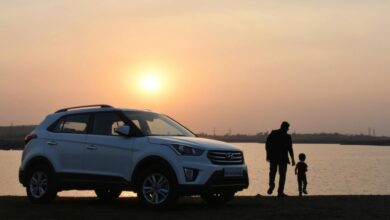Understanding the Difference Between Comprehensive and Collision Insurance

When it comes to protecting your vehicle, auto insurance is a critical component of ensuring peace of mind on the road. However, navigating the world of car insurance can be overwhelming, especially when terms like “comprehensive” and “collision” are thrown around. While both types of coverage aim to safeguard your vehicle, they serve very different purposes. In this article, we’ll break down the differences between comprehensive and collision insurance in detail, helping you make informed decisions about your policy.
What Is Comprehensive Insurance?
Comprehensive insurance, often referred to as “comp coverage,” is designed to protect your vehicle from damages that are not related to collisions . This type of coverage is all-encompassing (hence the name) and addresses a wide range of risks that could harm your car. Here’s what comprehensive insurance typically covers:
1. Natural Disasters
- Events such as floods, hurricanes, hailstorms, and earthquakes can cause significant damage to your vehicle. Comprehensive insurance steps in to cover repairs or replacements if your car is affected by these forces of nature.
2. Theft and Vandalism
- If your car is stolen or damaged by vandals, comprehensive insurance will help cover the costs associated with recovery, repair, or replacement.
3. Fire Damage
- Whether caused by an electrical fault, arson, or an accident involving fire, comprehensive coverage ensures you’re not left footing the bill for fire-related damages.
4. Animal Collisions
- Hitting an animal, such as a deer or a raccoon, can result in costly repairs. Comprehensive insurance covers these incidents, which are not classified as collisions with other vehicles.
5. Falling Objects
- From tree branches to rocks falling off a truck, comprehensive insurance protects your vehicle from damage caused by objects falling onto it.
6. Broken Windshields
- A cracked or shattered windshield is a common issue, and comprehensive insurance often covers the cost of repairs or replacements.
Key Takeaway:
Comprehensive insurance is your safety net for events beyond your control. It’s ideal for drivers who live in areas prone to natural disasters, theft, or wildlife encounters. However, it does not cover damages resulting from collisions with other vehicles or objects—this is where collision insurance comes into play.
What Is Collision Insurance?
Collision insurance, as the name suggests, provides coverage for damages to your vehicle that occur as a result of a collision . This type of insurance is specifically tailored to address accidents involving other vehicles or stationary objects. Let’s explore what collision insurance typically covers:
1. Collisions with Other Vehicles
- Whether you’re at fault or the other driver is, collision insurance helps pay for repairs to your car after an accident involving another vehicle.
2. Collisions with Stationary Objects
- Accidentally hitting a pole, fence, guardrail, or even a building? Collision insurance has you covered.
3. Rollover Accidents
- If your vehicle flips over due to a loss of control or an accident, collision insurance will help cover the repair costs.
4. Hit-and-Run Incidents
- In cases where another driver hits your car and flees the scene, collision insurance can step in to cover the damages.
Key Takeaway:
Collision insurance is essential for drivers who want protection against accidents, regardless of who is at fault. It’s particularly valuable for those who frequently drive in high-traffic areas or have newer, more expensive vehicles that would be costly to repair out-of-pocket.
Key Differences Between Comprehensive and Collision Insurance
While both comprehensive and collision insurance provide financial protection for your vehicle, they differ significantly in terms of the scenarios they cover. Below is a detailed comparison to help clarify their distinctions:
| Aspect | Comprehensive Insurance | Collision Insurance |
|---|---|---|
| Type of Damage Covered | Non-collision-related incidents (theft, weather, etc.) | Collision-related incidents (accidents, rollovers) |
| Examples of Covered Events | Theft, vandalism, fire, animal collisions, natural disasters | Car accidents, hitting stationary objects, rollovers |
| Who Is At Fault? | Irrelevant (covers events beyond your control) | Relevant (covers damages regardless of fault) |
| Cost of Premiums | Generally lower than collision insurance | Typically higher due to frequency of claims |
| Deductible Amount | Usually ranges from $100 to $500 | Often similar, but may vary based on policy |
Do You Need Both Comprehensive and Collision Insurance?
Deciding whether to purchase both comprehensive and collision insurance depends on several factors, including your vehicle’s value, your driving habits, and your financial situation. Here are some considerations to help you decide:
1. Vehicle Value
- If you own a newer or more expensive vehicle, having both types of coverage is highly recommended. The cost of repairs or replacements can be substantial, and insurance can save you from financial strain.
- For older vehicles with lower market values, the cost of premiums might outweigh the potential benefits of coverage.
2. Driving Environment
- Drivers in urban areas with heavy traffic may benefit more from collision insurance due to the higher risk of accidents.
- Those living in rural areas or regions prone to natural disasters might prioritize comprehensive insurance.
3. Financial Preparedness
- If you have savings set aside to cover unexpected car repairs, you might opt for only one type of coverage. However, if an accident or theft would create a financial burden, both policies offer greater security.
4. Lender Requirements
- If you’re financing or leasing your vehicle, your lender may require both comprehensive and collision insurance to protect their investment.
How Much Does Each Type of Insurance Cost?
The cost of comprehensive and collision insurance varies based on factors such as your location, driving history, vehicle type, and deductible amount. On average:
- Comprehensive Insurance : Tends to be less expensive because claims are less frequent. Deductibles typically range from $100 to $500.
- Collision Insurance : Usually costs more due to the higher likelihood of accidents. Deductibles are similar but can increase depending on your driving record.
To get an accurate estimate, it’s best to request quotes from multiple insurance providers and compare their offerings.




